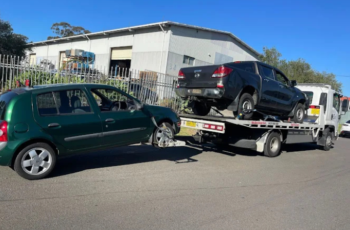Your car’s brake system is one of the most critical safety features, and the brake pads play a crucial role in this system. Car’s brake pads are the components that press against the rotor to slow down or stop the wheels from spinning. Over time, brake pads wear out, and it’s essential to check them regularly to ensure they’re working correctly. In this blog, we’ll discuss how to check if your car’s brake pads are working correctly and ensure your safety on the road.
Visual Inspection of the Brake Pads
The first step in checking the brake pads is a visual inspection. You need to look through the wheel’s spokes and check the brake pads for any visible signs of wear. A good rule of thumb is that the pads should be at least a quarter-inch thick. If the pads look thin or worn, it’s time to replace them.
There are several types of car brake pads available in the market. Some car brake pads come with a wear indicator and a small metal tab that makes a screeching noise when worn down. If you hear this noise, it’s time to replace the pads. However, not all brake pads have a wear indicator, so it’s essential to conduct a visual inspection regularly.
Listen for Squealing Sounds
Another way to check the brake pads is to listen for any squealing sounds while driving. Squealing or grinding noises could indicate that the pads are worn down and it’s time to replace them. However, it’s important to note that not all brake noise indicates a pad problem. Brake noise can also occur for various reasons, such as dirt or debris on the pads or rotors, uneven wear, or a loose brake component. Therefore, it’s best to have a professional mechanic inspect the brake system if you hear any unusual brake noise.
Pay Attention to Vibration or Pulsing
Any vibration or pulsing while pressing the brake pedal could indicate warped brake rotors or unevenly worn brake pads. Brake rotors are the flat, round discs the brake pads press against to stop the wheels from spinning. Warped rotors can cause the brake pedal to vibrate or pulse when you apply the brakes. Unevenly worn brake pads can also cause vibration or pulsing as they press against the rotor unevenly.
In this case, having a professional mechanic inspect the brake system is best. A mechanic can diagnose the problem and recommend the appropriate repair or replacement.
Check the Brake Fluid Level
The brake system relies on hydraulic fluid to operate, and if the brake fluid level is low, it could impact the performance of the brake pads. Check the brake fluid level regularly, and if it’s low, refill it to the appropriate level. You can find the brake fluid reservoir under the hood of your car. It’s usually located near the brake booster, a large, circular device mounted on the firewall. The brake fluid reservoir is a translucent plastic container with a cap marked “brake.”
When checking the brake fluid level, ensure the car is on level ground, and the engine is off. Remove the cap and check the fluid level. The fluid level should be between the minimum and maximum marks on the reservoir. If the level is low, add the recommended brake fluid to bring it to the appropriate level.
Check for Warning Light
Most modern cars have a dashboard warning light that illuminates when the car brake pads are worn or when there’s a problem with the brake system. If you see this warning light, a professional mechanic must check the brake system immediately.
If your car’s brake system does not work properly and you want to sell your old car for top cash, Metro Car Removals offer instant pay for unwanted vehicles.






